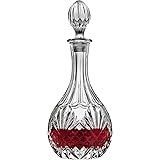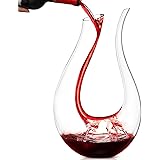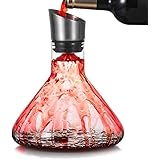The Enduring Influence of French Wines: A Global Journey
My wine journey, like many others, often started with familiar names. I would reach for a Cabernet Sauvignon or a Chardonnay, trusting these choices. It turns out, most of the wine world has been shaped by a single country. That country is France. The video above beautifully highlights France’s incredible impact on global winemaking.
Indeed, France is the original wine influencer. French grape varieties define what most of us drink today. This influence extends across continents and cultures. Let us explore some key insights into this fascinating dominance.
French Grapes: The Foundation of Global Winemaking
Think about the grapes you commonly enjoy. Cabernet Sauvignon, Merlot, and Chardonnay are global favorites. Syrah, Sauvignon Blanc, and Pinot Noir are also incredibly popular. Seven of the top ten grape varieties planted worldwide originated in France. These French grapes form the backbone of “New World” wine regions. Countries like the United States, Australia, and Chile rely heavily on them. These regions craft wines inspired by famous French styles. Understanding these foundational French wines deepens your wine knowledge.
1. Bordeaux: A Cabernet Sauvignon Powerhouse
Just a short TGV train ride from Paris lies Bordeaux. This region is a true titan in the wine world. Its Left Bank boasts gravelly soils. These conditions are ideal for Cabernet Sauvignon. A well-made Bordeaux Cabernet Sauvignon is a genuine treat. Expect rich blackcurrant and black cherry notes. Subtle wafts of brown baking spices may also appear. A hint of mint and pencil shavings often complete the aroma. This wine tastes big and bold. It features high tannin levels. Bordeaux Cabernet Sauvignon is perfect for aging. Quality demands a higher price. This reflects both production costs and popularity.
2. Saint-Émilion: The Art of Merlot
Merlot is a smoother, more approachable grape. It is often seen as Cabernet Sauvignon’s friendly sibling. Saint-Émilion put Merlot on the global map. This region sits east of Bordeaux city. Its clay-limestone soils are perfect for Merlot. These soils create bold, robust wines. Expect a velvety texture on your palate. Plum and blackberry notes dominate. You might also find hints of chocolate or meatiness. Oak aging benefits Merlot greatly. This process adds to the wine’s complexity. Quality Saint-Émilion commands a good price. It is generally more accessible than top Bordeaux Cabernet.
3. Chablis: Pure, Crisp Chardonnay
Chardonnay is incredibly versatile. France offers three distinct styles of this grape. Chablis showcases Chardonnay’s purest expression. It hails from Burgundy, France. Kimmeridgean soils characterize this area. These soils are rich in limestone. They even contain fossilized oysters. Chablis wines are crisp and mineral-driven. They are almost never oaked. This preserves their fresh apple flavors. Chablis can be somewhat expensive. Look to the Mâconnais region for similar value. You can find excellent, unoaked Chardonnay there.
4. Meursault: Rich, Oaked Chardonnay
For a richer Chardonnay experience, explore Meursault. This wine comes from Burgundy’s Côte de Beaune. Meursault winemaking often involves oak. This imparts a creamy texture. Caramelly, buttery, and vanilla notes develop. This special oak aging raises production costs. Meursault Chardonnay ranks among the world’s most expensive. It offers a luxurious, complex profile.
5. Champagne: The Celebratory Spirit of Chardonnay
Champagne is Chardonnay’s most festive form. Its distinctive bubbles come from secondary fermentation. This occurs inside the bottle. These fine bubbles create a mousse-like texture. Aged Champagne develops nutty characteristics. For pure Chardonnay Champagne, look for “Blanc de Blancs” on the label. Champagne is widely popular and quite pricey. Consider Crémant de Bourgogne as an alternative. This sparkling wine from Burgundy offers excellent value.
6. Bourgogne: Elegant Pinot Noir
Pinot Noir epitomizes elegance and finesse. Burgundy’s Côte de Nuits is its pinnacle. Clay and limestone soils dominate this region. They yield elegant, complex wines. Expect red cherry and raspberry flavors. Earthy undertones add depth. These wines are built for long aging. They possess subtle tannins and high acidity. Pinot Noir from Burgundy offers a wide price range. Village wines are more accessible. Grand Cru vineyards can cost thousands.
7. Cahors: The Original Malbec
Finally, we consider Malbec from Cahors. This region is in Southwest France. Cahors Malbec is known for its inky color. It offers richly intense flavors. Blackberry and plum notes are prominent. Smoky, earthy undertones complete the profile. Malbec is famous in Argentina today. However, Cahors is its original home. French Cahors Malbec is a meaty wine. It pairs wonderfully with lamb or beef stew. This wine offers a robust, satisfying experience.
Exploring these iconic French wines enhances your global wine knowledge. Learning their origins and styles is invaluable. These French wine varieties and regions truly defined the world of wine.







